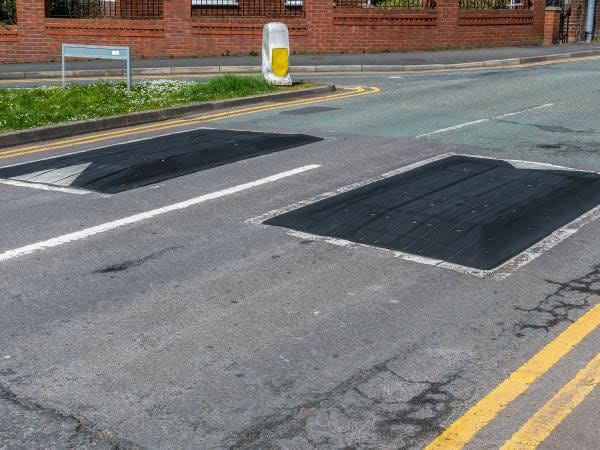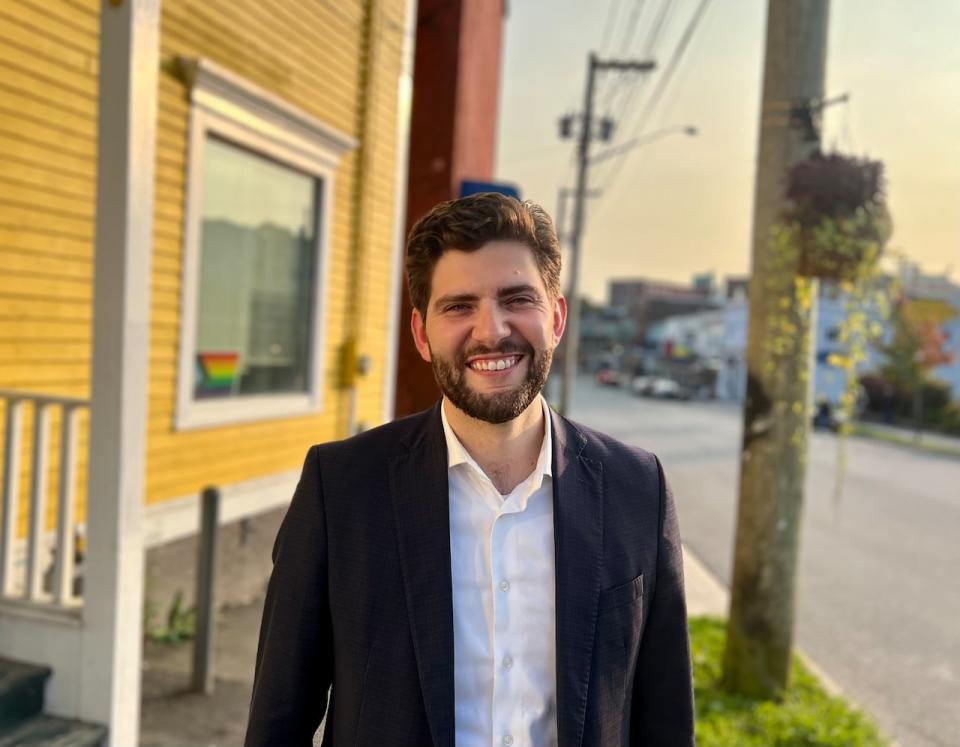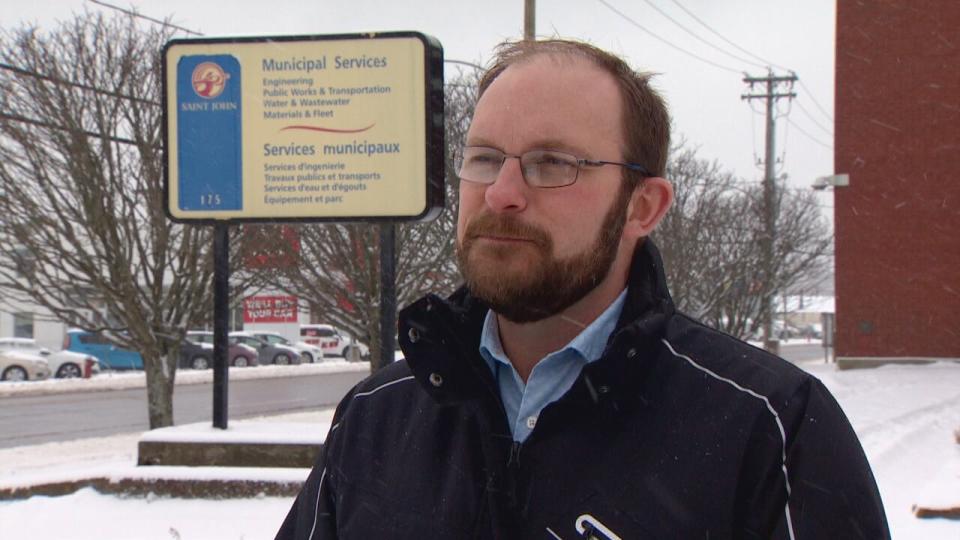Saint John to get more speed cushions on city streets after successful pilot

After a successful trial of speed cushions on McNamara Drive in east Saint John, council voted Monday to bring the traffic-calming measure to five more streets this year, including Douglas Avenue.
"With installation of these speed cushions, the average speed of vehicles decreased by nine kilometres an hour, resulting in an over 25 per cent reduction in risk of collisions," Coun. David Hickey, chair of the city's public safety committee, said of the the McNamara Drive pilot project.
Complaints about speeding on the rise
"All three emergency services and Saint John Transit reported no undue impacts with the installation of the speed cushions, a benefit over the more traditional speed hump."
The proposal approved Monday night is a response to more than 300 citizen requests to address speeding in their neighbourhoods, according to a council report.
That's up to five times the number received in 2021.
The pilot project, called the Expedited Traffic Calming Initiative using Speed Cushions, will now become an annual program as a result of council's motion.
Council also voted to reduce the speed on McNamara Drive to 40 kilometres an hour from 50.

Coun. David Hickey credits the speed cushions on McNamara Drive with decreasing speeds an average of nine kilometres an hour. (Submitted by David Hickey)
A speed cushion is a raised, rounded feature slightly wider than a car and installed in the centre of a lane, unlike the typical speed bumps often found in other cities, including Fredericton, that run straight across a street and are more jolting to drivers.
A space between the cushions for each direction of traffic allows buses and emergency vehicles, which are wider than the cushions, to pass over them without occupants feeling anything.
O'Reilly said speed cushions were designed for vehicles going 40 kilometres an hour, said Tim OReilly, director of public works and transportation.
"People can drive safely faster than that," he said.

Tim O'Reilly, the city's director of public works and transportation, says the province is working on putting cameras at intersections and on roads with high speeding rates. (Roger Cosman/CBC)
"But what it does is create that discomfort level by driving faster than 40 kilometres an hour."
Hickey said the benefit of speed cushions are their cost-efficiency, effectiveness and versatility in being able to be retrofitted onto existing streets, until more extensive solutions are implemented.
The cushions are preferable to speed bumps because they allow for a better flow of traffic and for vehicles like fire trucks to get over them easily.
The council report says city staff intend to install speed cushions this year on about five streets.
They include Cedarwood Drive and Douglas Avenue, which people have been using as a short cut between west Saint John and the north end.
The hope is that the speed cushions will get people using Chesley Drive instead, the report said.
The other streets getting speed cushions weren't named.
Time and resources, significant factors
Coun. Brent Harris questioned the proposal, saying he wanted to see more "small modular" traffic-calming measures, citing examples in Halifax and Charlottetown.
"It could be removable bollards they could put on streets so they can be turned into pedestrian streets, so that there's not a culture of traffic on that street," Harris said. "But it might be open once in a while for traffic and, you know, just different things.

Coun. Brent Harris says the speed cushions are a small step and discussion is needed about a more significant approach. (Jacques Poitras/CBC)
"Small curbs, small Jersey barriers to direct traffic, plant-like green spaces in the middle of intersections, so that it's not a traffic circle, but it forces you to slow down and direct traffic anyway."
He asked O'Reily if speed cushions were a sign of getting closer to more modular traffic-calming as funding becomes available.
O'Reilly said his department will continue looking at different solutions, but resources and time are major factors.
"We can take a long approach of trying to find different solutions for different streets or we can run one that's proven effective in their communities. We've proven it worked in McNamara Drive."
Harris voted for adding more speed cushions anyway, saying he felt something needed to be done about speeding.
Red light cameras on the horizon
Hickey, Harris and other councillors agreed the cushion plan was a small step and more work is needed.
"These speed cushions, I think they're great alone," Deputy Mayor John MacKenzie said. "They're not the magic bullet but they're certainly a good tool."
O'Reilly said the province is working on putting cameras on roads and intersections with heavy speeding rates.
"Once those come out in the spring, then we'll be back to council to indicate what the implications would be of moving forward."

